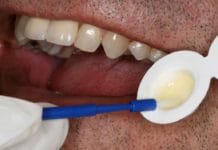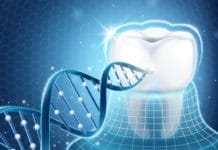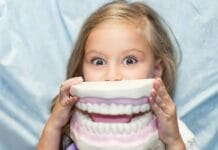The first thing that comes to my mind when I hear the word “charcoal,” is a great tasting chargrilled burger. What I do not think about is rubbing a charcoal powder to cleanse my face or use as a facial peel. I also don’t think about plastering black clumps of charcoal all over my teeth to try to whiten them. This charcoal whitening fad is sparking a lot of attention on social media, but I would rather see this trend fade away. People may be hypnotized by the cheap and quick possibility of being able to improve their beauty or smile, but I won’t be jumping on the bandwagon anytime soon. I am fully aware of its negative long-term effects, and I want to make sure everyone else is aware too.
Charcoal vs. Activated Charcoal
What is Charcoal exactly? It is mostly made of carbon. Once heated and burned with high intensity in a low oxygenated environment, it eventually turns into black clumps and powder. This is called Char. The production of Char began in the early Ancient Egyptian times, and they believed that it had a unique property that could be used as a preservative. Once activated, they used it as an antibacterial product to treat certain illnesses and diseases4. “Activated charcoal” is a carbon-rich material that has increased surface area (which is very absorbent) due to processing charcoal at high temperatures, or by exposing it to gas or chemicals to “activate” it11.
In 1963, activated charcoal was first medically recognized by the Journal of Pediatrics7. They recognized it as a way to treat toxic poisoning and drug overdose, as long as the health professionals used it within one hour of an incident4. Activated charcoal is not effective in poisonings caused by strong acids or bases; these include cyanide, organic solvents, ethanol, methanol, iron, lithium, among other substances1.
Disadvantages of Orally-ingested Activated Charcoal
There are side effects to ingesting activated charcoal orally. Side effects include diarrhea, vomiting, gastrointestinal damage, black tongue, and it can even counteract medication absorption. Some medications that interact with charcoal are digoxin, acetaminophen, theophylline, tricyclic antidepressants, diabetes medications, and even birth control1,8. When taken with a laxative, toxicologists have stated that serious side effects can occur such as dehydration (which can lead to kidney damage), electrolyte imbalances, and low blood pressure1.
As a hygienist, many of the patients we treat could have interactions with ingesting charcoal due to the medications they take. I would especially warn my diabetic patients against brushing with activated charcoal because even the slightest chance they ingested it, could lead to the risk of it interacting or counteracting with their life-saving diabetes medication. It’s just not worth the risk. The bottom-line is patients should speak with their prescribing physician before ingesting charcoal.
Disadvantages of Using Charcoal as a Whitening Agent
As far as the use of charcoal in oral care products, there isn’t much scientific or clinical research to back up the claim of efficacy and safety2,9,10. Due to the possible abrasiveness of charcoal, and the increase of surface roughness of enamel that can occur, there are disadvantages in using activated charcoal10. Disadvantages include dental erosion (increased surface roughness which could lead to even more retention of stain), dentin exposure, and gingival recession. These can all lead to sensitivity to cold or hot and an increased target for decay3. How? With the use of any abrasive substance on enamel, leading to the loss of enamel, yellowing, and darkening of teeth can occur due to dentin exposure. This completely undermines the use of using charcoal to whiten in the first place. Further, when dentin is exposed, it becomes more decay-prone. Dentin demineralizes at a pH of 6.5, whereas enamel demineralizes at a pH of 5.5. It is very important that patients understand that when enamel is gone, it’s gone. It doesn’t grow back. Only a restoration can cover the discoloration and damage. Further, charcoal may become lodged subgingivally. This may cause inflammation and tissue trauma.
So while a patient may be enjoying brushing their teeth with charcoal and feeling fresh and clean now, I hope they take into consideration the possible long-term damage and side effects and put these above the superficial, temporary benefits. It is not worth saving a few bucks. As a dental professional, I would treat my family, friends, and patients how I would want to be treated. If I won’t use it, I would definitely not recommend it to anyone else. I would suggest investing a little more money and purchase either an over-the-counter, low-dose hydrogen or carbamide peroxide whitening product or have a dental professional whiten a patient’s teeth in-office.
I offer my patients a two-layer whitening system. The first layer is hydrogen peroxide. The second layer is the sealer that locks it on, and after only thirty minutes, patients see drastic results. The difference between hydrogen or carbamide peroxide whitening and charcoal whitening is that hydrogen and carbamide peroxide whiten your teeth by penetrating the enamel and breaking molecular bonds. Charcoal only removes surface stain through abrasion. I would only recommend using caution with any product that contains an abrasive powder. As for me, the only thing I plan to use charcoal for is to grill a great tasting burger.
References
- Activated Charcoal: Bottom Line Monograph. (Aug 2013). Retrieved from https://www.naturalmedicinejournal.com/journal/2013-08/activated-charcoal-bottom-line-monograph
- Brooks, J.K., Bashirelahi, N., Reynolds, M.A. Charcoal and Charcoal-Based Dentifrices: A Literature Review. The Journal of The American Dental Association. 2017 Sept;148(9):661-670. Retrieved from http://jada.ada.org/article/S0002-8177(17)30412-9/abstract
- Dentist Warns Against Charcoal Teeth Whitening Trend. (Aug 2015). Retrieved from http://www.foxnews.com/health/2016/08/15/video-featuring-charcoal-as-teeth-whitener-reaches-millions.html
- Goldwyn, M. The Science of Charcoal: How Charcoal is Made and How Charcoal Works. Retrieved from https://amazingribs.com/more-technique-and-science/grill-and-smoker-setup-and-firing/science-charcoal-how-charcoal-made-and
- Hubbard, L., Tunell, A. Is Charcoal Toothpaste Safe to Use? (Aug 2017) Retrieved from http://www.harpersbazaar.com/beauty/health/advice/a3764/charcoal-toothpaste-pros-cons/
- Lapus, R.M. Activated Charcoal for Pediatric Poisonings: The Universal Antidote. Curr Opin Pediatr.2007 Apr;19(2):216-22. Retrieved from https://www.ncbi.nlm.nih.gov/pubmed/17496769
- Lowry, J. (Jan 2008) Use of Activated Charcoal in Pediatric Populations. (Jan 2008). Retrieved from http://citeseerx.ist.psu.edu/viewdoc/download?doi=10.1.1.540.5640&rep=rep1&type=pdf
- Mayo Clinic. (March 2017). Charcoal, Activated (Oral Route). Retrieved from https://www.mayoclinic.org/drugs-supplements/charcoal-activated-oral-route/before-using/drg-20070087
- Natural Teeth Whitening: Fact vs. Fiction. Mouth Healthy brought to you by the American Dental Association. Retrieved from http://www.mouthhealthy.org/en/az-topics/w/natural-teeth-whitening
- Pertiwi, U.I., Eriwati, Y.K., Irawan, B. Surface Changes of Enamel after Brushing with Charcoal Toothpaste. Journal of Physics. Retrieved from http://iopscience.iop.org/article/10.1088/1742-6596/884/1/012002
- WebMD. Activated Charcoal. Retrieved from https://www.webmd.com/vitamins-supplements/ingredientmono-269-activated%20charcoal.aspx?activeingredientid=269











